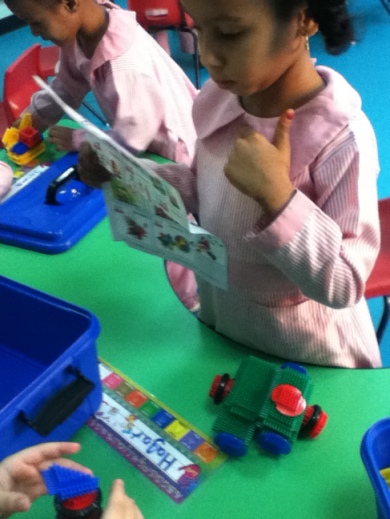
Teaching Patterns
I love teaching patterns, particularly in the beginning of the year so we can keep referencing them throughout the year. However, this year, my programme of inquiry had patterns being taught last with my homes unit (Where we are in place and time: People make their homes in different places and in different ways). Since I do a balance of integrated math and stand alone, the student really enjoyed going on pattern hunts as we looked at different homes, along with discussing and creating brick patterns. I thought I was doing a pretty good job when one of my 4 year olds turns to me and says, “You know Ms. Judy, we learned patterns last year in EY3 and we are pretty good at it. I think we should learn something else.” Krikey! Out of the mouths of babes, I was properly told off. So I reflected on what we were doing and decided to add symmetry into the mix.
After the topic was introduced, out came the mirrors and rulers, and the children began exploring how to create mirror image patterns: symmetry. They were absolutely captivated. Although I don’t have any pictures of the early explorations (I was too busy helping them hold mirrors) , I would like to share some of the later activities.
In the first set of pictures, we clamored upon the playground, drawing lines of symmetry with some chalk, and then the children worked as partners, taking turns making patterns with various manipulatives, which the other had to copy. They did a great job, and even helped to create the PicCollages that you see. Later on, we worked with the app, Geoboard, by The Math Learning Center, to create symmetrical patterns. Again they did fantastic job, and worked very cooperatively, much to my chagrin. At last, we just got plain silly and used the app Photobooth by Apple to create symmetrical pictures using the “mirror”. Some of the kids took those images and recorded ideas and stories using the app Fotobable. It was a wonderful way for them to extend their idea of patterns, and they did such a wonderful job working together to collaborate on the images.













